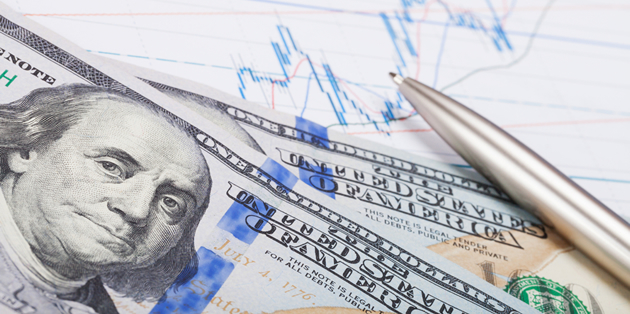After hitting its best levels since May 2016, the EUR/USD exchange rate registered losses on Monday.
Last week saw the US Dollar struggling on the back of both a negative International Monetary Fund (IMF) report that critiqued the White House’s economic policies and some negative US economic data releases.
This Monday, however, the tide has turned, with the US Dollar rebounding sharply due to US treasury yields hitting their highest level since mid-May and a round positive data.
There were two very different takes on US manufacturing this afternoon. The US ISM for manufacturing PMI printed at a whopping 57.8, far higher than the 55.2 forecast and indeed the 54.9 previous figure. Markit, however, calculated manufacturing activity to be at 52.0, down from 52.1, with the disparity between Markit and ISM’s figures likely due to differing calculation methodologies. The US Dollar seemed unperturbed by the difference between the two figures, however, and held gains against the majors.
Of the other significant data for the US today; the US production index climbed to 62.4% for June, rising from 57.1 in May, whilst new orders leapt up to 63.5 (previous 59.5). The US employment data was also positive, registering at 57.2 for June – far higher than the 53.5 for May.
Euro (EUR) Falls Behind Despite Eurozone Manufacturing Hitting Six-Year High
The Euro/US Dollar exchange rate has fallen by 0.6% in the face of the US Dollar’s rally despite the Eurozone publishing some positive manufacturing data.
This morning the Markit Eurozone Manufacturing PMI for June printed higher than expected at 57.4, up from May’s 57.3, with the most significant contributors being Austria, Germany and the Netherlands, which have reported growth for some 76, 74, and 74 months respectively. There was also good news also for Greece’s manufacturing sector, which finally returned to growth for the first time in almost a year.
Chris Williamson, Chief Business Economist at HIS Markit elaborated:
‘Eurozone manufacturing growth gained further momentum in June, rounding off the best quarter for just over six years. At current levels, the PMI is indicative of factory output growing at an annual rate of some 5%, which in turn indicates the goods- producing sector will have made a strong positive contribution to second quarter economic growth’.
In other data, the Eurozone’s unemployment figure failed to meet expectations this morning when it printed at 9.3% for May; higher than the 9.2% expected by economists.
Current EUR USD Interbank Exchange Rates
At the time of writing, the Euro US Dollar (EUR USD) exchange rate is trading at 1.1365. Conversely the US Dollar Euro (USD EUR) exchange rate is trading at 0.8796.



